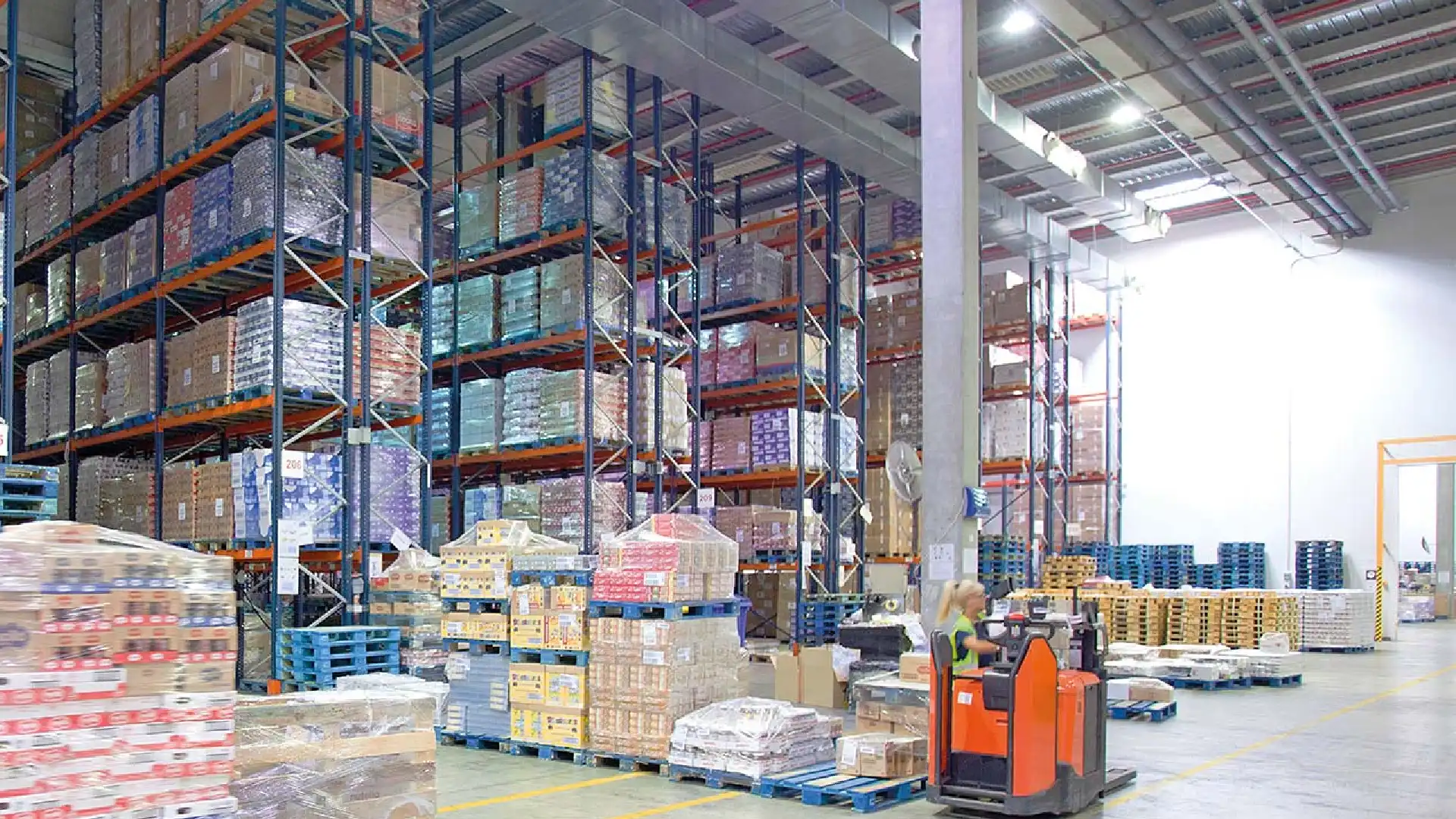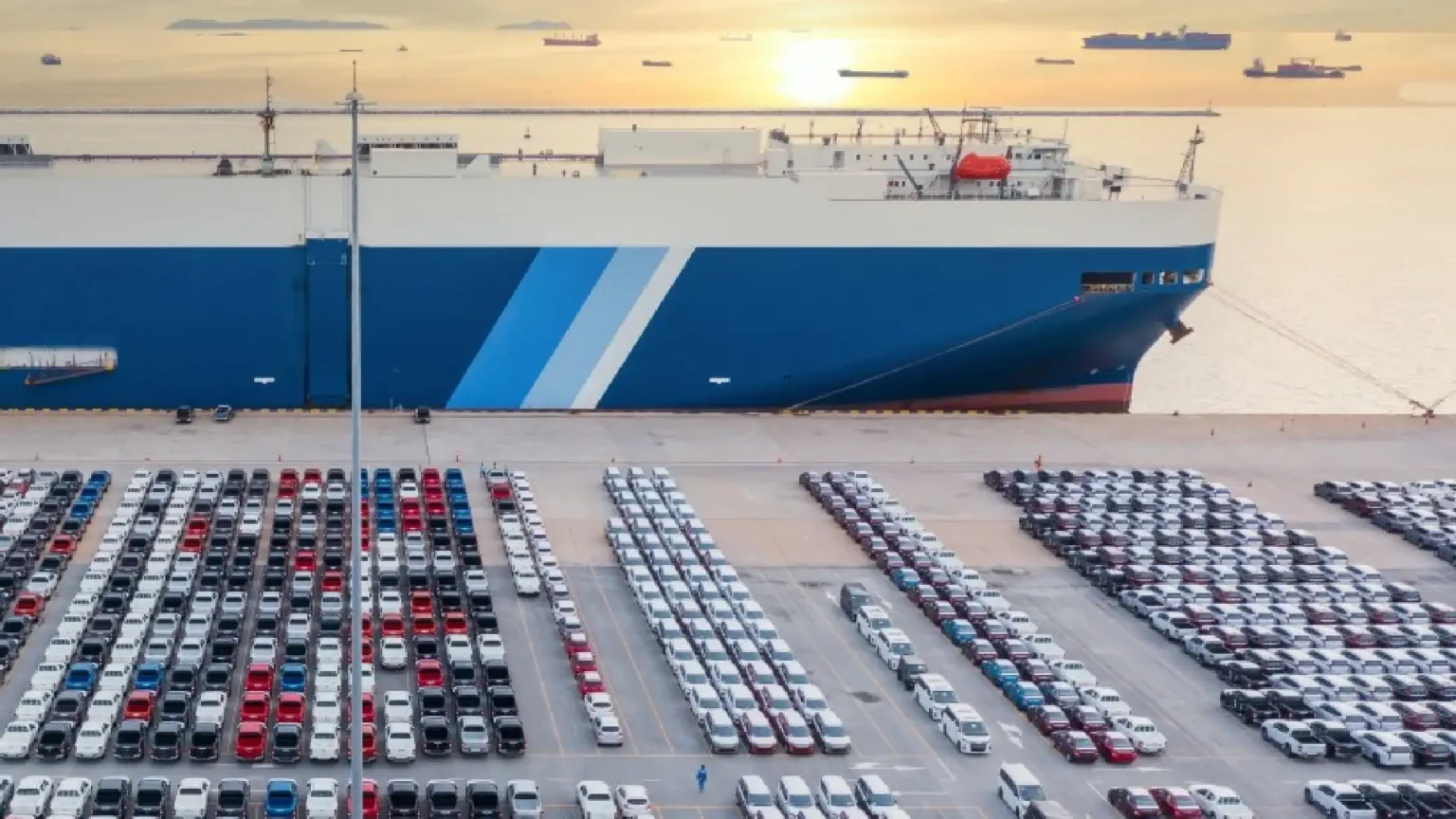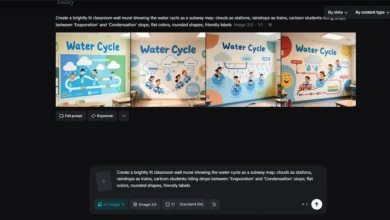
- Understanding 3PL warehouse systems is essential for businesses looking to optimize their logistics operations.
- The key features of 3PL warehouse management systems (WMS) include inventory tracking, order fulfillment, and real-time visibility into warehouse operations.
- Implementing a 3PL WMS can streamline processes, improve accuracy, and enhance customer satisfaction.
- Evaluating 3PL software should involve assessing scalability, integration capabilities, and reporting functionalities to meet specific business needs.
- Market trends in 3PL software indicate a shift towards cloud-based solutions and the integration of advanced technologies like IoT and AI for enhanced efficiency.
- Choosing the right 3PL provider requires thorough research, consideration of industry expertise, and alignment with the company’s long-term goals.
In the fast-paced world of logistics, a robust 3PL warehouse system can be the difference between chaos and seamless operations. Whether you’re a small business looking to optimize your supply chain or a large corporation aiming for efficiency, implementing an effective 3PL warehouse system is pivotal. From streamlined inventory management to enhanced order fulfillment, this system offers unparalleled benefits. However, choosing the right one amidst the myriad of options can be overwhelming.
Understanding 3PL Systems
Role of Warehouse Software
Warehouse software, also known as 3PL systems, plays a crucial role in managing and optimizing the operations of third-party logistics providers. These systems are designed to streamline processes such as inventory management, order fulfillment, and shipping. By utilizing advanced technology, 3PL warehouse systems enable companies to efficiently track their inventory levels and monitor the movement of goods within the warehouse.
The primary function of 3PL warehouse systems is to enhance visibility and control over the entire supply chain process. With real-time data and analytics capabilities, these systems empower businesses to make informed decisions regarding inventory allocation, order prioritization, and resource utilization. They facilitate seamless communication between different stakeholders involved in the logistics network.
Evolution of 3PL Services Over time, the landscape of third-party logistics services has evolved significantly with the integration of sophisticated 3PL warehouse systems. Initially focused on basic warehousing and transportation functions, modern 3PL providers now offer a wide range of value-added services such as packaging customization, kitting solutions, and even e-commerce fulfillment support. The adoption of advanced technologies has enabled 3PLs to expand their service offerings while ensuring operational efficiency.
Benefits of Using 3PL Systems The utilization of 3PL warehouse systems offers several benefits for businesses seeking efficient logistics management solutions. These include improved inventory accuracy through automated tracking mechanisms, enhanced order processing speed leading to faster delivery times for customers, and optimized utilization of storage space within warehouses.
Defining 3PL Warehouse Systems
3PL warehouse systems play a crucial role in the smooth functioning of logistics and supply chain operations. These systems are essential for automating and optimizing various warehouse processes, ultimately enhancing accuracy and efficiency.
Warehouse software is important in 3PL because it enables the seamless management of inventory, orders, and logistics. By utilizing such software, third-party logistics providers can streamline their operations, ensuring that products are stored, picked, packed, and shipped accurately and promptly.
The automation capabilities of 3PL warehouse systems significantly reduce manual errors while increasing productivity. For instance, these systems can automate inventory tracking to ensure real-time visibility into stock levels. This not only minimizes human error but also enhances overall operational efficiency.
Enhancing accuracy and efficiency through software is pivotal for 3PL providers as it directly impacts customer satisfaction. With accurate order fulfillment and timely deliveries made possible by the system’s automation features, customers receive their goods on time with minimal errors or delays.
How 3PL Warehouse Systems Operate
Inventory Management
A 3PL warehouse system includes various components for effective inventory management. It integrates with ERP and CRM systems to ensure seamless operations. By utilizing cloud-based technology, it allows real-time tracking of inventory levels.
For instance, a comprehensive 3PL system enables businesses to track their stock levels efficiently. With integration into ERP and CRM systems, companies can manage their inventory more effectively. Cloud-based technology provides real-time visibility into stock levels.
Efficient inventory tracking and control are essential in order fulfillment processes. The system minimizes stockouts and overstock situations by providing accurate data on inventory levels.
Order Fulfillment
In a 3PL warehouse system, efficient order fulfillment is crucial for meeting customer demands. Real-time visibility into stock levels ensures that orders are processed promptly without delays or errors.
For example, the system streamlines order processing and fulfillment by optimizing picking, packing, and shipping processes. This helps in meeting customer delivery expectations while minimizing errors in the order fulfillment process.
Real-time visibility into stock levels is vital for minimizing stockouts and ensuring timely order processing. The system also plays a significant role in reducing overstock situations through efficient inventory management.
Billing Processes
The billing processes within a 3PL warehouse system play a critical role in optimizing overall operations. By streamlining order processing and fulfillment, businesses can ensure accurate billing for their services.
Optimizing picking, packing, and shipping processes contributes to streamlined billing procedures within the 3PL warehouse system. Meeting customer delivery expectations through efficient operations further enhances the accuracy of billing processes.
Key Features of 3PL WMS
Inventory Visibility
3PL warehouse systems provide real-time inventory visibility, allowing businesses to track the movement of their products at every stage. This ensures that accurate stock levels are maintained, minimizing stockouts and overstock situations. The system also automates billing processes for precise invoicing, offering transparency in billing for clients. It seamlessly integrates with accounting systems, streamlining financial operations.
The automated billing feature eliminates manual errors and discrepancies in invoicing, enhancing accuracy and efficiency in financial transactions. Clients benefit from transparent billing practices as they can easily understand the charges incurred for warehousing services. Integration with accounting systems simplifies the overall financial management process by syncing all relevant data seamlessly.
Logistics Management
A key feature of 3PL warehouse systems is their ability to offer comprehensive logistics management solutions. These systems provide real-time visibility across the entire supply chain, enabling businesses to monitor inventory movement at various stages accurately. Furthermore, they empower businesses to provide their customers with shipment tracking information, ensuring a seamless and transparent experience throughout the fulfillment process.
Real-time visibility across the supply chain allows businesses to make informed decisions promptly based on accurate data about inventory levels and movement. By tracking inventory movement at different stages – from receiving to storage and dispatch – companies can optimize their operations efficiently while meeting customer demands effectively.
Benefits of 3PL Warehouse Systems
Scalability and Efficiency
3PL warehouse systems offer scalability by managing transportation and distribution activities. This means that as your business grows, the system can adapt to handle increased orders and shipments without causing disruptions. For example, if your e-commerce store experiences a sudden surge in orders during the holiday season, a 3PL warehouse system can efficiently manage the increased volume without compromising on delivery times.
Moreover, these systems are adept at optimizing routes for cost-effective delivery. By analyzing various factors such as distance, traffic patterns, and shipment volume, they ensure that goods are transported in the most efficient manner possible. This not only saves time but also reduces fuel costs and environmental impact.
3PL warehouse systems excel in handling customs clearance and international logistics. They have expertise in navigating complex customs regulations and documentation requirements for international shipments. This ensures smooth cross-border movement of goods while minimizing delays or compliance issues.
Cost Considerations
One of the significant benefits of 3PL warehouse systems is their ability to adapt to fluctuating business demands while maintaining cost efficiency. For instance, during periods of low demand or off-peak seasons, businesses can scale down their operations with minimal impact on overall expenses.
Furthermore, these systems continuously work towards enhancing operational efficiency over time through process optimization and automation. As a result, businesses can achieve higher productivity levels while keeping operating costs in check.
In addition to this flexibility and efficiency improvement potential comes support for business growth without compromising service quality.
Evaluating 3PL Software
Vendor Selection
When choosing a 3PL warehouse system, it’s crucial to consider factors that influence the cost of 3PL services. These include the volume of goods, transportation expenses, and any additional services required. Balancing cost and service quality is essential; while cost is important, it’s equally vital to ensure that the chosen vendor can meet your business’s needs effectively.
Process optimization presents an opportunity for cost-saving within a 3PL warehouse system. By streamlining processes and improving efficiency, businesses can reduce operational costs without compromising on service quality. For example, optimizing inventory management and order fulfillment processes can lead to significant savings in labor costs and storage expenses.
Software Requirements
When evaluating a potential 3PL software vendor, certain criteria must be considered to ensure reliability. It’s important to assess the vendor’s experience in handling similar businesses and their capabilities in meeting specific industry requirements. This includes examining their track record with other clients and understanding how well they align with your business objectives.
Ensuring compatibility with business requirements is another critical aspect when selecting a 3PL software provider. The software should seamlessly integrate with existing systems and support the unique needs of your operations. For instance, if real-time inventory visibility is crucial for your business model, confirming that the software offers this feature is paramount.
Implementing a 3PL WMS
Integration Process
Implementing a 3PL warehouse system involves identifying essential features in the software. For example, an easy WMS should offer inventory management, order processing, and reporting capabilities. Customization options for specific needs are crucial to ensure that the system aligns with unique business requirements. Compatibility with existing IT infrastructure is also vital to guarantee smooth integration without disrupting daily operations.
When integrating a 3PL WMS, businesses need to consider its suitability for different business sizes. It’s important to ensure seamless integration with existing systems such as ERPs or CRMs. Data migration considerations play a significant role in transitioning from old systems to the new one without loss of critical information. Minimizing disruption during implementation is paramount as it helps maintain operational efficiency while adapting to the new system.
It’s crucial for businesses of all sizes, whether small startups or large enterprises, to assess how well an easy WMS integrates into their current setup and supports their growth.
Market Trends in 3PL Software
Omnichannel Fulfillment
The 3PL warehouse system is adapting to the trend of omnichannel fulfillment, where businesses cater to customers across various platforms. Small businesses benefit from tailored 3PL solutions that meet their specific needs. For instance, a small online boutique might require a 3PL software that seamlessly integrates with its e-commerce platform and provides real-time inventory updates.
As companies grow, they need scalability options within their 3PL systems to accommodate increased order volume and expanding operations. This scalability ensures that the 3PL solution can grow alongside the business without requiring a complete overhaul or replacement.
Large-scale operations demand robust warehouse management systems, which can handle high order volumes efficiently while maintaining accuracy and speed. These systems are designed to manage complex logistics, multiple distribution centers, and diverse product lines effectively.
Multi-Channel Retailing
With the rise of multi-channel retailing, businesses require 3PL software capable of managing orders from multiple sales channels such as websites, mobile apps, social media platforms, and physical stores. The integration of these channels into one centralized system allows for streamlined order processing and inventory management.
Consistency across all customer touchpoints is crucial for building brand loyalty. A comprehensive 3PL warehouse system ensures that regardless of where an order originates or how it’s fulfilled—online, in-store pickup, or home delivery—the customer receives a consistent experience.
Choosing the Right 3PL Provider
Service Evaluation
When considering a 3PL warehouse system, it’s crucial to evaluate the services offered. Look for providers that support diverse retail platforms, coordinate inventory across different channels, and fulfill orders from various sales channels. For example, if your business operates both online and brick-and-mortar stores, you’ll need a 3PL provider capable of seamlessly managing inventory and order fulfillment for both.
It’s also important to consider how well the 3pl providers can meet service level agreements (SLAs) as this directly impacts customer satisfaction. Gathering client feedback is another essential aspect. A reliable provider should continuously seek input from clients to identify areas for improvement.
Benchmarking performance against industry standards is equally vital when choosing a 3PL provider. This involves comparing a potential provider’s performance metrics with those of other industry players to ensure they are up to par or even exceed expectations.
Factors Influencing Choice
The decision-making process should be influenced by various factors such as the ability of party logistics providers to adapt their services based on specific business needs. Flexibility in scaling operations up or down according to demand fluctuations is critical for long-term success.
Technology integration plays a significant role in today’s fast-paced logistics environment. Seek out 3PL providers that leverage advanced technologies such as automation, real-time tracking systems, and data analytics tools to streamline processes and enhance efficiency.
Conclusion
Industry-Specific Requirements
The 3PL warehouse system is evolving to meet the unique demands of various industries. For example, in the pharmaceutical sector, warehouses must comply with strict regulations for storing and distributing sensitive medications. On the other hand, e-commerce companies require warehousing solutions that can handle high volumes of small orders efficiently.
Adapting to these diverse needs requires a deep understanding of each industry’s specific requirements. By tailoring their services accordingly, 3PL providers can ensure seamless operations and customer satisfaction across different sectors.
Technological Advancements
The future of 3PL warehousing hinges on embracing technological advancements to streamline processes and enhance efficiency. Automation technologies such as robotics and AI are increasingly being integrated into warehouse operations to optimize tasks like picking, packing, and inventory management.
Furthermore, advanced data analytics tools play a crucial role in providing valuable insights into inventory levels, demand forecasting, and order fulfillment. These technologies not only improve operational efficiency but also enable 3PL providers to offer more accurate and reliable services to their clients.
Changing Consumer Preferences
As consumer expectations continue to shift towards faster deliveries and transparent supply chains, 3PL warehousing solutions must adapt accordingly. The rise of omnichannel retailing has led to an increased emphasis on flexible logistics capabilities that can seamlessly integrate online marketplaces with brick-and-mortar stores.
Moreover, eco-friendly practices are becoming a big part of consumer preferences. Therefore, sustainable warehousing practices such as energy-efficient facilities and reduced packaging waste are gaining prominence in the realm of third-party logistics.
Summary
You’ve now got a solid grasp of 3PL warehouse systems, from their definition and operation to the key features, benefits, and market trends. Evaluating and implementing a 3PL WMS can be a game-changer for your business, but it’s crucial to choose the right provider. Keep an eye on emerging technologies and industry shifts to stay ahead of the curve in optimizing your warehouse operations.
In today’s fast-paced world, leveraging efficient 3PL warehouse systems is no longer just an option – it’s a necessity for staying competitive. So, take what you’ve learned here and start exploring how you can integrate these insights into your own logistics strategy. The right 3PL software could be the key to unlocking new levels of productivity and success for your business.
Frequently Asked Questions
What are 3PL warehouse systems?
3PL warehouse systems are software solutions designed to manage the storage, distribution, and fulfillment processes within a third-party logistics provider’s warehouse. These systems integrate various functions such as inventory management, order processing, and shipping to streamline operations.
How do 3PL warehouse systems operate?
3PL warehouse systems operate by utilizing technology to efficiently handle tasks like receiving goods, managing inventory levels, picking items for orders, packing shipments, and tracking deliveries. They provide real-time visibility into inventory movement and enable seamless communication between different stakeholders in the supply chain.
What are the key features of 3PL WMS?
Key features of a 3PL Warehouse Management System (WMS) include inventory tracking, order management tools, labor management capabilities, integration with other business applications (e.g., ERP), reporting and analytics functionalities for performance monitoring and optimization.
What benefits do 3PL warehouse systems offer?
The benefits of using a 3PL warehouse system include improved operational efficiency through automation, enhanced accuracy in order fulfillment leading to better customer satisfaction, optimized inventory control resulting in cost savings from reduced carrying costs and minimized stockouts.
How can I choose the right 3PL provider?
When choosing a 3PL provider consider factors such as their experience in your industry vertical or specific service requirements you have. Assess their technological capabilities including their WMS offering. Additionally evaluate their network coverage which aligns with your distribution needs.

















